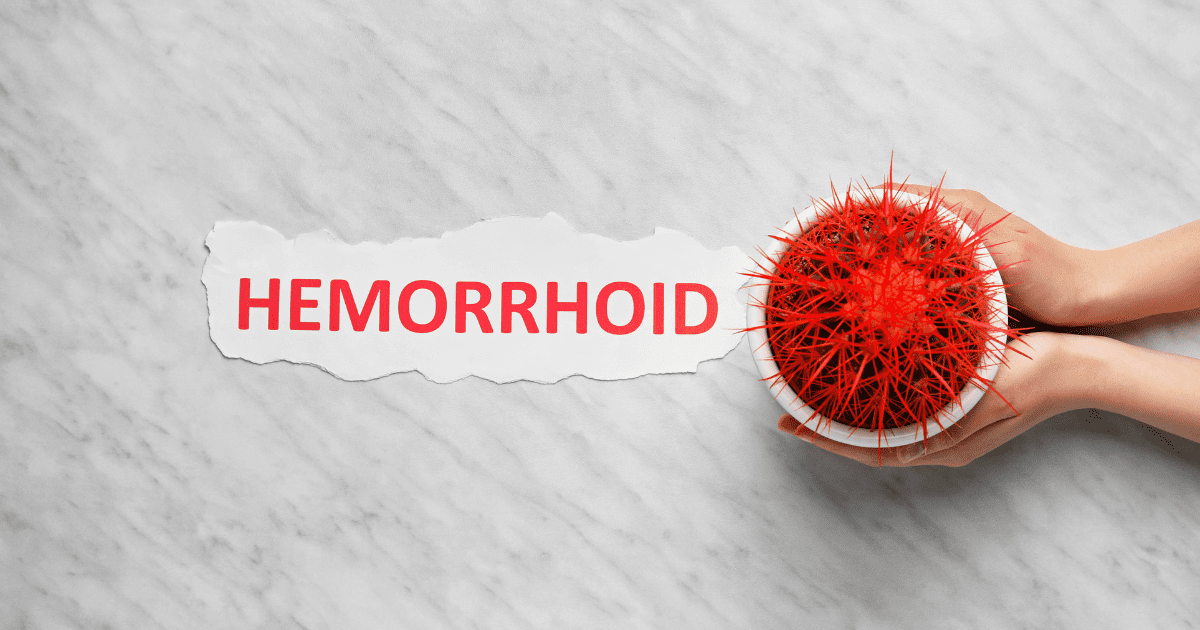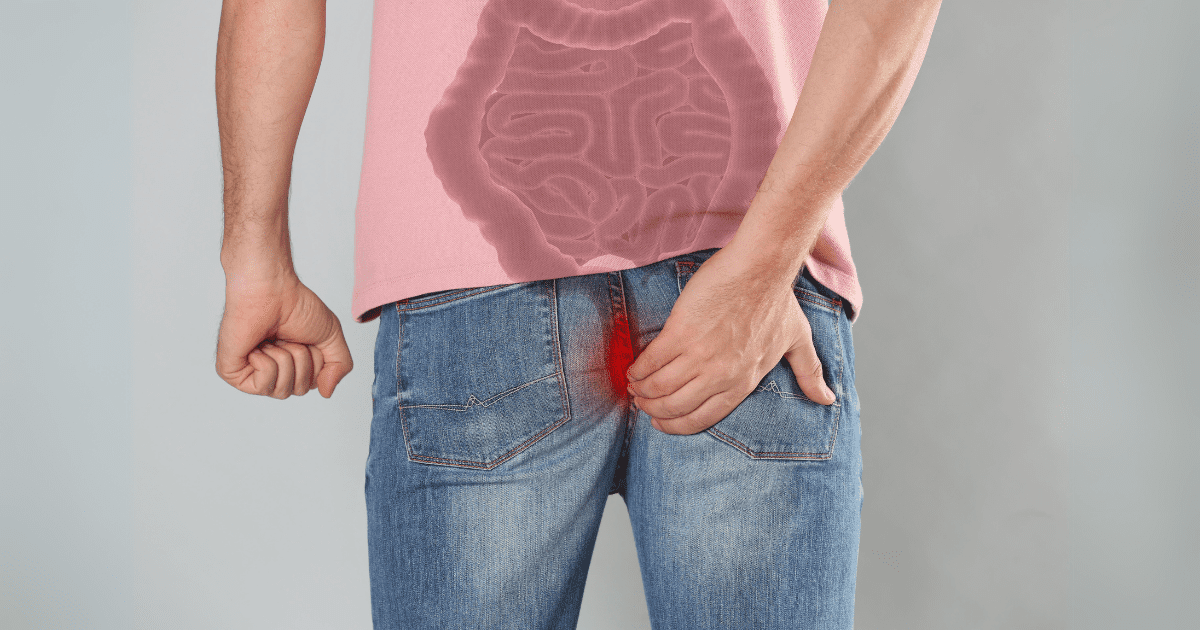Introduction
Hemorrhoids, commonly referred to as piles, are a prevalent medical condition that can cause significant discomfort and pain. They are so common, there is a 1 in 3 chance that any one of us will encounter them at some point in life. To give more precise medical data: more than 15% of visits to general practitioners in France are because of anal problems thought to be hemorrhoids; and there are 4 million visits in the US in a year for the same.
Over the years, medical advancement introduced new and newer various surgical procedures – referred to as hemorrhoid surgeries or hemorrhoid procedures – to address this ailment more effectively. The new methods are promising less post-procedural pain, quicker recovery, faster return to work and less chance of recurrence. By understanding the different treatment options available, patients can make informed decisions about their health, ensuring a smoother and more comfortable medical journey.

LPH (Laser Hemorrhoid Procedure)
Hemorrhoids, though common, can be a source of immense discomfort. The LPH, or Laser Hemorrhoid Procedure, offers a modern solution to this age-old problem. Utilizing advanced laser technology, this procedure stands out as one of the least painful and fastest surgical methods available for hemorrhoid removal treatment.
LPH: Procedure and Benefits
The LPH procedure involves introducing a laser probe through pinpoint incisions just outside the anal opening. This probe is then navigated under both the external and internal hemorrhoid cushions up to the top of the anal canal. Laser energy is applied to coagulate the hemorrhoid vessels and reattach the prolapsing cushions back to the muscle wall of the anal canal. The benefits of this method are manifold. Not only is it significantly less painful than other hemorrhoid surgeries, but the time to return to work or other normal activity is also much faster. The healing keeps going on silently and painlessly in the background, since the laser light induces tissue regeneration, leading to continuous improvement for 6 to 8 weeks post-procedure.
LPH: Recovery and Results
Recovery from the LPH procedure is notably swift. Most patients observe immediate results, with the treated area continuing to shrink and retract for several weeks after the surgery. This is due to the laser light’s ability to induce tissue regeneration. The minimal invasiveness of the procedure ensures that patients experience less post-operative pain and can return to their regular activities sooner. It’s essential, however, for patients to follow post-operative care guidelines and attend follow-up visits to ensure optimal healing and results.
Hemorrhoidopexy: An Overview
Hemorrhoidopexy, another advanced procedure in the realm of hemorrhoid removal treatments, focuses on undoing the prolapse, by lifting up and fixing the fallen hemorrhoidal tissue inside the anal canal: hence the name pexy, which means fixing/hanging up. Unlike methods that remove hemorrhoidal cushions, hemorrhoidopexy aims to restore the normal anatomy by repositioning these cushions and reducing their blood supply. This approach offers a less painful alternative to traditional cutting surgeries, making it a preferred choice over hemorrhoidectomy.
Hemorrhoidopexy: Techniques and Advantages
There are two main techniques for performing hemorrhoidopexy: suturing with surgical threads and stapling with a surgical circular stapling device. The choice of method often depends on the severity of the additional mucosal lining prolapse inside the rectum. The suture hemorrhoidopexy achieves lifting up the prolapsed hemorrhoidal cushions by stitching. To shrink the blood supply to the cushions, the hemorrhoidal arteries are also sutured. This method uses Doppler ultrasound guidance to find the arteries and suture them accurately, known as ultrasound-guided hemorrhoid artery ligation. The primary advantage of suture hemorrhoidopexy is its ability to restore normal anatomy without cutting away the hemorrhoid cushions, resulting in a less painful post-operative experience compared to the traditional cutting hemorrhoidectomy.
The stapled hemorrhoidopexy on the other hand is lifting up the prolapsed cushions by cutting out a cylinder of tissue in the rectum just above the internal hemorrhoidal cushions and rejoining the cut ends by staples. The shrinking of the blood supply in this method is achieved also by this circumferential cut, which cuts through the arterial supply. Since the cut is in the rectum, where there is no pain sensation, this method is also less painful than the traditional hemorrhoidectomy. Recovery is faster, recurrence is same like other minimally invasive methods but more compared to the standard cutting hemorrhoid surgery.

Hemorrhoidectomy: Traditional Approach
Hemorrhoidectomy stands as the time-tested and conventional method for treating hemorrhoids. This procedure involves the surgical removal of hemorrhoids, and while it has been practiced for many decades, it’s known for its painful postoperative course. Despite its reputation, hemorrhoidectomy remains an the only effective solution for cases with advanced internal and external hemorrhoids, when the external components are large and fixed.
Hemorrhoidectomy: Methods and Outcomes
Hemorrhoidectomy – cutting away the enlarged hemorrhoid cushions – can be performed using various tools: scalpel, electrocautery, or laser. Independent of the chosen method, the procedure results in wounds, typically three, that run the whole length of the anal canal. These wounds can either be left open, known as the Milligan-Morgan Hemorrhoidectomy, to prevent infective complications from stool bacteria, or they can be closed with stitches for faster healing, as seen in Park’s or Ferguson Hemorrhoidectomy. The method chosen often depends on the surgeon’s assessment and the specific needs of the patient.
Hemorrhoidectomy: Healing and Complications
The post-operative phase of a hemorrhoidectomy is notably painful, often described by patients as one of the most discomforting experiences. Healing can take several weeks, and the pain can sometimes lead to complications such as anal fissure formation. It’s crucial for patients to be aware of the extended recovery time and potential risks. However, with proper post-operative care, complications can be minimized. While modern medical advancements have introduced less painful alternatives, traditional hemorrhoidectomy still holds its place for few specific cases, ensuring complete removal of problematic hemorrhoids.
Preparation for Hemorrhoid Procedures
Undergoing a hemorrhoid surgery, regardless of the chosen method, requires some preparation to ensure the procedure goes smoothly and the recovery is optimal. This preparation involves both physical and mental readiness, ensuring the patient is in the best possible state for the surgery.
Preoperative Anesthesia Consultation
Before the hemorrhoid surgeries, patients will have a consultation with the anesthetist. This meeting is needed to discuss any medical history and allergies relevant from anesthesia point of view, and to understand how to prepare for the day of the procedure. Here a routine blood test is done and a routine medical examination during which the doctor will find out if any further specialist visits are necessary to ensure a safe anesthesia process. It’s an opportunity to address any concerns or questions and within limits it is possible to choose between different anesthesia options. The patient should leave this consultation with the precise knowledge of what time eating and drinking need to be stopped before surgery as well as if any special preparation is needed.
Fasting and Bowel Preparation
A period of 6-hour fasting is typically required before anal operation due to anesthesia. While thorough bowel preparation isn’t mandatory for hemorrhoid surgeries, an enema is usually administered on the day of the surgery.
It’s essential for patients to be mentally prepared for the surgery. Understanding the procedure, recovery timeline, and potential risks can help alleviate anxiety and ensure a positive mindset going into the piles operation.

Post-Surgery Expectations
After undergoing a hemorrhoid surgery, it’s essential for patients to know what to expect during the recovery phase. This knowledge aids in managing post-operative symptoms and ensures a smooth healing process.
Post-Surgery: Medications and Follow-ups
Upon completion of the operation, patients will typically receive a combination of medications to manage pain and prevent infections. These may include anti-inflammatory painkillers, local anesthetic jelly, and antibiotics. It’s crucial to adhere to the prescribed medication regimen and dosage instructions. Additionally, the doctor will provide a contact number for emergencies and schedule a follow-up visit, usually within 2 to 5 days post-surgery. This visit allows the doctor to assess the healing process and address any concerns the patient might have.
Pain Management and Activity Level
After the operation, patients might experience varying levels of discomfort, depending on the procedure type as well as on the patient’s tolerance to pain. Pain management is top priority, and the prescribed medications play a significant role in this. The numbing injection given during anal surgery, known as the pudendal nerve block, significantly reduces the post-operative pain. Patients are advised to rest and avoid strenuous activities for the first few postoperative days. Gradually resuming daily activities is recommended, but it’s essential to listen to one’s body and not rush the recovery process. Proper care and adherence to post-operative guidelines can significantly improve the healing experience.
Recovery Timelines
The recovery period post-hemorrhoid surgery varies based on the type of procedure and the individual’s overall health. It’s essential for patients to be aware of these timelines to set realistic expectations and plan their postoperative obligations accordingly.
Laser Hemorrhoid Procedure Recovery
For the LPH method, most patients experience a swift recovery, with healing times ranging from 1 to 5 days.
Hemorrhoidopexy Recovery
Recovery from hemorrhoidopexy typically spans between 3 to 10 days, depending on the severity of the hemorrhoids treated.
Traditional Hemorrhoidectomy Recovery
The traditional cutting hemorrhoidectomy has a more extended recovery period, often taking several weeks for complete healing.
Benefits and Risks
Hemorrhoid surgeries offer significant relief from the discomfort and pain of hemorrhoids. However, like all medical procedures, they come with their set of benefits and potential risks.
Benefits of Hemorrhoid Surgeries
Surgical treatments provide a long-term solution to hemorrhoids, reducing the chances of recurrence. They also offer immediate relief from pain, bleeding, and discomfort associated with severe hemorrhoids.
Potential Risks and Complications
While complications are rare, they include unusual levels of pain, bleeding, difficulties passing urine, and adverse reactions to medications used during the procedure. These potential risks are discussed with the doctor before the procedure.
Piles Treatment Without Surgery
For many individuals experiencing the discomfort of hemorrhoids, the idea of surgery can be daunting. Thankfully, there are several effective methods for treating piles without surgery. These conservative treatment options provide relief of flare-ups, but do not prevent the progression of the condition.

Dietary and Lifestyle Changes
A significant aspect of conservative treatment revolves around dietary and lifestyle modifications. Chronic constipation, a leading cause of piles, can be managed by incorporating a high-fiber diet. This change not only softens stools but also promotes regular bowel movements, reducing strain on the rectal area. Coupled with adequate water intake and avoiding prolonged sitting, these changes form the cornerstone of piles treatment without surgery.
Over-the-Counter Medications
Another avenue for piles treatment without surgery is the use of over-the-counter creams, ointments, and suppositories. These products, readily available in pharmacies, are formulated to alleviate the pain, itching, and swelling associated with hemorrhoidal flare ups. While they offer a convenient method to alleviate symptoms, they are not able to undo anatomical changes and it’s essential to use them as directed to avoid prolonged use without medical advice.
Non-Surgical Medical Procedures
For those seeking more advanced but still conservative treatment to avoid surgery, there are minimally invasive office procedures like rubber band ligation, sclerotherapy, and infrared coagulation. These treatments, which are typically outpatient procedures, aim to shrink the hemorrhoids. They are able to postpone surgery by 2-5 years. The reason behind their limited effectiveness is that they do not address the underlying problems, do not deal with prolapse and do not reduce blood flow to the hemorrhoid cushions. They shrink the hemorrhoidal tissue by working on the “tip of the iceberg”.
In conclusion, piles treatment without surgery offers a range of options suitable for mostly the early stages of hemorrhoids and for treatment of acute flare ups. It’s always advisable to consult with a healthcare professional to determine the best approach.
For a comprehensive understanding of related conditions, consider exploring other sections of the website. Learn more about the causes, symptoms, and treatments for Diarrhea, delve into the intricacies of Constipation, or gain insights into the complexities of Pelvic floor descent. Each section offers valuable information to guide you on your health journey.